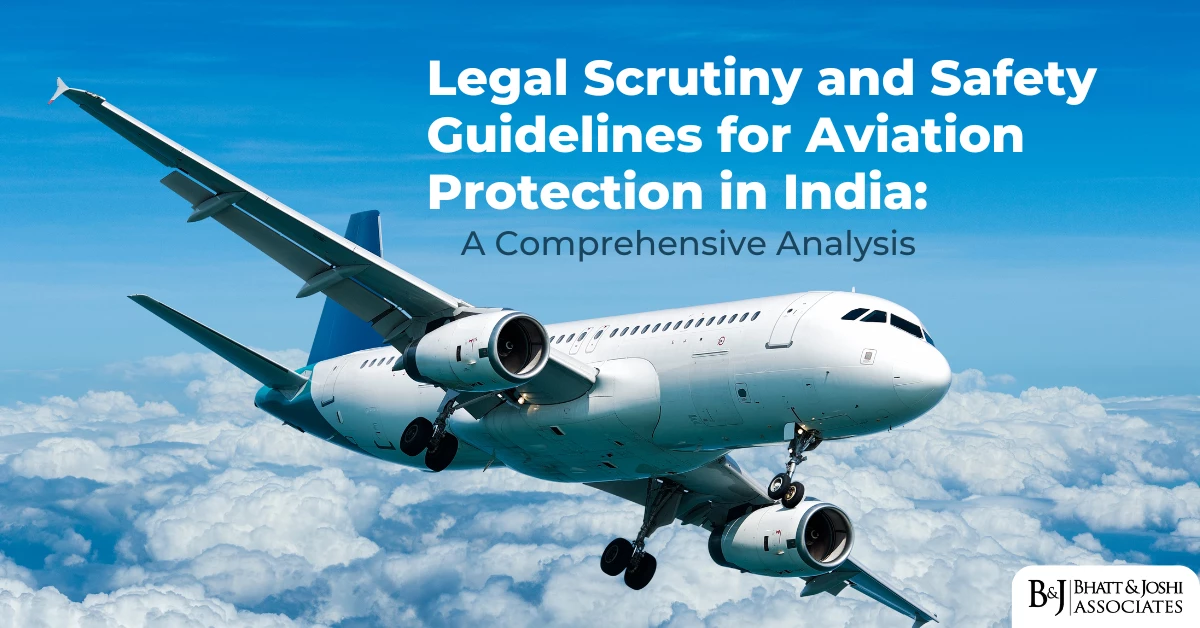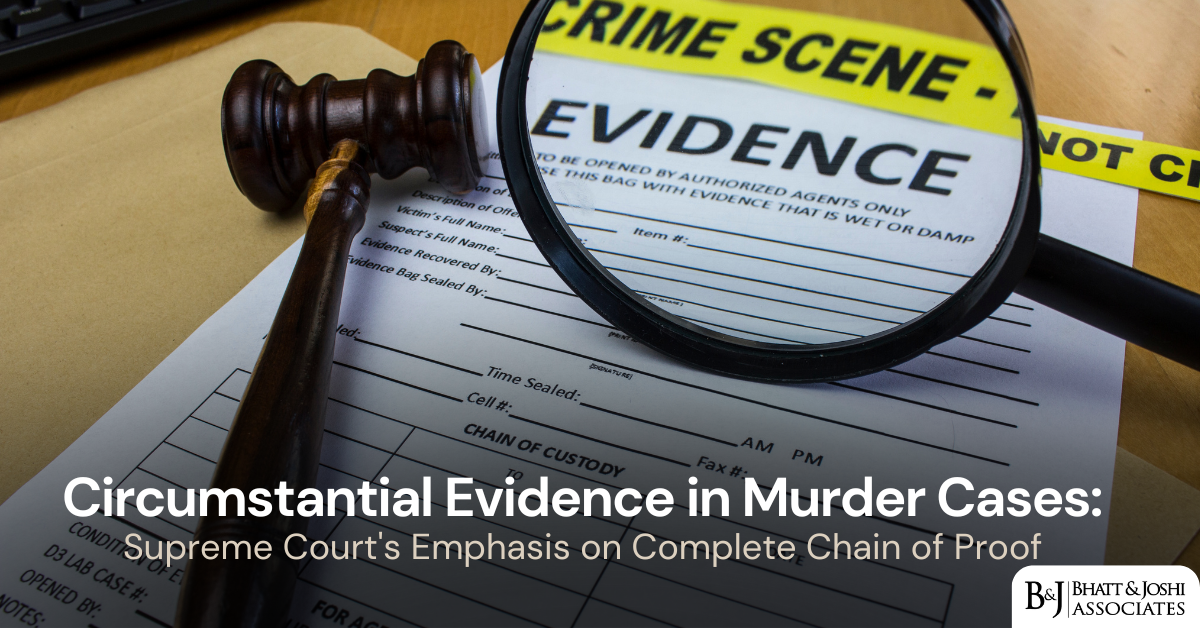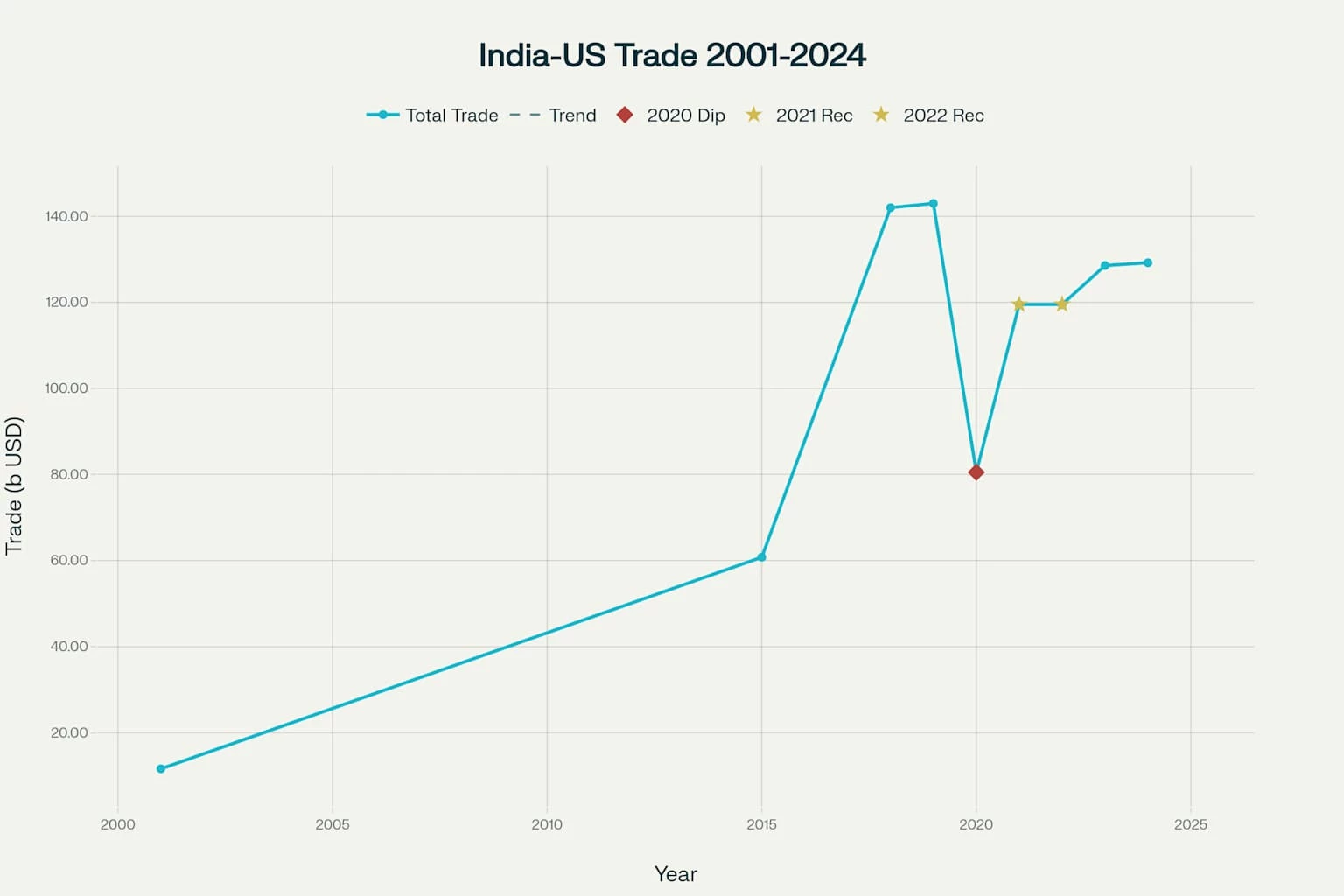Introduction
The recent tragic Air India crash in Ahmedabad has brought into sharp focus the critical importance of aviation safety regulations in India and the legal scrutiny mechanisms in the country’s rapidly expanding aviation sector. With the loss of over 240 lives marking the world’s worst aviation disaster in a decade, there is an urgent need to examine the existing legal framework governing aviation safety and the regulatory mechanisms that ensure protection of passengers, crew, and ground personnel [1]. This incident has intensified scrutiny on aviation safety regulations in India, which are designed to prevent such catastrophic events through rigorous oversight, mandatory compliance protocols, and stringent enforcement measures.
India’s aviation industry, recognized as the world’s fourth-largest civil aviation market, operates under a comprehensive legal framework that has evolved significantly from the foundational Aircraft Act of 1934 to the recently enacted Bharatiya Vayuyan Adhiniyam of 2024 [2]. The regulatory architecture encompasses multiple layers of safety oversight, accident investigation protocols, and enforcement mechanisms administered by various statutory bodies including the Directorate General of Civil Aviation (DGCA), Aircraft Accident Investigation Bureau (AAIB), and the Ministry of Civil Aviation.
Historical Evolution of Aviation Safety Regulations in India
The Aircraft Act, 1934: Foundation of Aviation Regulation
The Aircraft Act, 1934 serves as the cornerstone of India’s aviation legal framework, establishing the fundamental principles for aircraft regulation, safety oversight, and operational standards. Section 5 of the Act empowers the Central Government to make rules for regulating the manufacture, possession, use, operation, sale, import, and export of aircraft [3]. This foundational legislation has been amended multiple times to address evolving safety concerns and technological advancements in aviation.
The Act specifically addresses safety through Section 7, which empowers the Government of India to make rules for investigation of accidents arising out of or in the course of navigation in or over India of any aircraft. This provision forms the legal basis for the establishment of independent accident investigation mechanisms that are crucial for understanding the causes of aviation incidents and preventing their recurrence.
The Aircraft Rules, 1937: Operational Safety Framework
The Aircraft Rules, 1937, formulated under the Aircraft Act, provide detailed operational guidelines for aviation safety. Rule 161 mandates that “no aircraft shall be flown unless the aircraft possesses a valid certificate of airworthiness or special certificate of airworthiness issued by the Director-General” [4]. This rule establishes the fundamental principle that aircraft airworthiness certification is mandatory for all flight operations.
The Rules further specify under Part VI that aircraft must be maintained in accordance with prescribed provisions and carry valid certificates of airworthiness. Rule 29 requires aircraft registration and compliance with all terms and conditions specified in airworthiness certificates, creating a comprehensive framework for ongoing safety oversight throughout an aircraft’s operational life.
Current Regulatory Framework and Safety Oversight
Directorate General of Civil Aviation (DGCA): Primary Safety Regulator
The DGCA operates as India’s primary aviation safety regulator, responsible for enforcing civil aviation regulations and ensuring compliance with safety standards. Under the Aircraft (Amendment) Act, 2020, the DGCA became a statutory body with enhanced powers for safety oversight [5]. The organization’s mandate includes regulation of air transport services, enforcement of air safety standards, and coordination with the International Civil Aviation Organization (ICAO) for maintaining international compliance.
Recent updates to DGCA regulations in 2024 have introduced significant enhancements to safety oversight mechanisms. The Continuing Airworthiness Requirements (CAR-M), effective from July 31, 2024, establish comprehensive aircraft maintenance standards [6]. These requirements mandate that all aircraft operators implement systematic maintenance programs with proper documentation, regular inspections, and adherence to manufacturer specifications.
Civil Aviation Requirements (CAR): Detailed Safety Standards
The Civil Aviation Requirements issued by the DGCA provide specific standards for licensing, certification, and operational approvals. CAR Section 4, Series X, Part II, issued on July 8, 2024, establishes the framework for Ground Handling Service Providers (GHSPs) safety clearance and operations at licensed airports [7]. This regulation requires GHSPs to obtain safety clearance within six months, implement Safety Management Systems (SMS), and maintain comprehensive training programs for personnel.
The Flight Data Analysis Program (FDAP) under Section 5 of the CAR provides a systematic tool for proactive identification of hazards in aircraft operations before they result in accidents or serious incidents. All scheduled and non-scheduled operators must establish FDAP as part of their safety management system to identify operational shortcomings and implement corrective measures.
Accident Investigation Framework
Aircraft Accident Investigation Bureau (AAIB): Independent Investigation Authority
The Aircraft Accident Investigation Bureau, established in 2012 as an independent body under the Ministry of Civil Aviation, conducts investigations into aircraft accidents and serious incidents. The Aircraft (Investigation of Accidents and Incidents) Rules, 2017 govern the AAIB’s operations and mandate compliance with ICAO Annex 13 standards for accident investigation [8].
Section 7 of the Aircraft Act 1934 provides the legal foundation for accident investigation, stating that the Government of India shall make rules for investigation of accidents arising out of or in the course of navigation. The AAIB operates independently from the DGCA to ensure that investigation functions remain separate from regulatory oversight, preventing conflicts of interest and ensuring objective analysis of safety deficiencies.
Investigation Protocols and Legal Requirements
The Aircraft (Investigation of Accidents and Incidents) Rules, 2017 establish detailed protocols for accident investigation. Rule 11 requires that the Investigator-in-Charge must be appointed within 24 hours of notification of an accident, and preliminary reports must be submitted within 30 days [9]. The rules mandate cooperation from all parties involved in aviation operations, including operators, maintenance organizations, and air traffic control services.
Following the recent Air India crash, the AAIB has initiated a comprehensive investigation focusing on engine performance, flaps configuration, and landing gear systems. The recovery of the digital flight data recorder has provided crucial evidence for understanding the sequence of events leading to the accident, demonstrating the importance of mandatory black box requirements under aviation safety regulations.
Enforcement Mechanisms and Legal Consequences
Penalty Provisions Under Aviation Laws
The Aircraft Act and Rules establish significant penalties for violations of safety regulations. Section 11 of the Aircraft Act provides for imprisonment up to one year and fines for contravention of rules, while Section 11A addresses security-related violations with enhanced penalties including fines up to ten lakh rupees [10]. Recent enforcement actions by the DGCA demonstrate the serious consequences of non-compliance with safety regulations.
In January 2025, an airline was fined ₹30 lakh for allowing a pilot to operate without meeting recency requirements, highlighting the DGCA’s intensified enforcement approach [11]. The Aircraft Rules specify that violations can lead to fines up to ₹5 lakh, license suspensions, or imprisonment, creating strong deterrents against safety violations.
Safety Management System Requirements
The DGCA has made Safety Management Systems (SMS) mandatory for all air operators under CAR Section 9. SMS requirements include establishment of safety policies, risk management procedures, safety assurance processes, and safety promotion programs. Operators must maintain safety performance monitoring systems and conduct regular safety audits to ensure continuous improvement in safety standards.
Flight crew duty time and fatigue management regulations have been strengthened following safety incidents. Non-compliance with Flight Duty Time Limitations (FDTL) can result in penalties including operational restrictions and monetary fines, as demonstrated by the ₹8 million fine imposed on an airline in March 2024 for breaching fatigue management regulations.
International Legal Obligations and Compliance
ICAO Standards and Recommended Practices
India, as a signatory to the Chicago Convention, must comply with International Civil Aviation Organization standards and recommended practices. The DGCA coordinates all regulatory functions with ICAO and implements amendments to ICAO Annexes through modifications to the Aircraft Act and Rules. The Universal Safety Oversight Audit Programme (USOAP) conducted by ICAO evaluates India’s compliance with international safety standards.
The Carbon Offsetting and Reduction Scheme for International Aviation (CORSIA) has been implemented through CAR Section 10, requiring operators producing CO2 emissions exceeding 10,000 tonnes annually to monitor, report, and offset their carbon emissions [12]. This regulation demonstrates India’s commitment to international environmental standards while maintaining safety oversight.
Montreal Convention and Passenger Rights
The Carriage by Air Act, 1972 implements the Montreal Convention provisions governing carrier liability for passenger injury, death, and baggage loss. Article 17 of the Montreal Convention establishes airline liability for passenger injury or death during flight operations, with compensation limits specified under international law. Recent court decisions have strengthened passenger rights and established guidelines for compensation determination in accident cases.
Recent Legal Developments and Case Law
Landmark Aviation Safety Cases
The Supreme Court’s decision in Maneka Gandhi vs. Union of India (1978) established that the right to travel abroad constitutes a fundamental right under Article 21 of the Constitution, requiring that any restrictions on air travel must not be arbitrary [13]. This precedent has influenced subsequent aviation law development and passenger rights protection.
In the Air India Express case (2010), following the Mangalore crash that killed 158 people, the court established comprehensive guidelines for victim compensation and airline liability determination. The case emphasized the importance of proper safety oversight and established precedents for compensation calculations based on earning capacity and family circumstances.
The IndiGo Airlines vs. Indian Oil Corporation Ltd (2018) case addressed Aviation Turbine Fuel pricing disputes, highlighting the economic factors affecting aviation safety through operational pressures on airlines. The case demonstrated how fuel cost pressures can indirectly impact safety through operational decision-making processes.
Recent Regulatory Enforcement Actions
The DGCA’s enforcement actions in 2024-2025 demonstrate increased scrutiny of safety compliance. The suspension of operations for safety violations, monetary penalties for regulatory breaches, and enhanced oversight of aircraft maintenance have created a more stringent compliance environment. The recent directive requiring one-time checks of take-off parameters for Boeing 787-8/9 aircraft following the Air India crash shows the regulator’s proactive approach to safety assurance.
Emerging Challenges and Future Regulatory Directions
Technology Integration and Safety Oversight
The integration of advanced technologies including artificial intelligence, automated flight systems, and digital maintenance tracking presents new challenges for aviation safety regulation. The DGCA has begun updating Civil Aviation Requirements to address drone operations, Beyond Visual Line of Sight (BVLOS) flights, and unmanned aircraft systems integration into controlled airspace.
The Drone Rules 2021 and subsequent amendments in 2024 have simplified registration processes while maintaining safety oversight through Digital Sky platform implementation. These regulations demonstrate the evolving nature of aviation law to address technological advancements while preserving safety standards.
Environmental Compliance and Safety Integration
Environmental regulations increasingly intersect with safety requirements as airlines adopt sustainable aviation fuels and implement carbon reduction measures. The challenge lies in ensuring that environmental compliance measures do not compromise safety standards while achieving climate objectives outlined in international agreements.
Recommendations for Enhanced Safety Oversight
Strengthening Regulatory Framework
The aviation safety regulations in India requires continuous enhancement to address emerging risks and technological developments. Key recommendations include establishing independent funding mechanisms for safety oversight bodies, enhancing penalty provisions for serious safety violations, and implementing mandatory safety performance monitoring systems for all aviation stakeholders.
The proposed transformation of DGCA into a Civil Aviation Authority (CAA) modeled on the Federal Aviation Administration would provide enhanced autonomy, recruitment powers, and financial independence necessary for effective safety oversight. This institutional reform would strengthen regulatory capacity and improve safety oversight effectiveness.
Improving Accident Prevention Mechanisms
Enhanced focus on proactive safety measures through mandatory implementation of Safety Management Systems, improved pilot training standards, and strengthened maintenance oversight can prevent accidents before they occur. The National Aviation Safety Plan requires regular updates to address evolving risks and incorporate lessons learned from international best practices.
Conclusion
The legal framework governing aviation safety in India represents a comprehensive system of regulations, oversight mechanisms, and enforcement tools designed to protect passengers, crew, and ground personnel. The recent Air India crash has highlighted both the importance of existing safety regulations and the need for continuous improvement in their implementation and enforcement.
The evolution from the Aircraft Act of 1934 to the Bharatiya Vayuyan Adhiniyam of 2024 demonstrates India’s commitment to modernizing its aviation legal framework while maintaining rigorous safety standards. The independent accident investigation process, comprehensive regulatory oversight by the DGCA, and strong penalty provisions create a robust foundation for aviation safety.
However, the tragic loss of lives in recent aviation accidents underscores the critical importance of vigilant enforcement, continuous regulatory improvement, and unwavering commitment to strengthening aviation safety regulations in India. As India’s aviation sector continues its rapid expansion, the legal framework must evolve to address emerging challenges while maintaining the highest standards of safety and protection for all stakeholders in the aviation ecosystem.
The path forward requires strengthened institutional capacity, enhanced international cooperation, and continued focus on proactive safety measures that prevent accidents rather than merely responding to them. Only through such comprehensive legal and regulatory oversight can India achieve its goal of becoming a global aviation hub while ensuring the safety and security of all who depend on air transportation.
References
[1] Reuters. (2025, June 14). What is known about the Air India crash and its investigation. Available at: https://www.reuters.com/business/aerospace-defense/what-is-known-about-air-india-crash-its-investigation-2025-06-14/
[2] Live Law. (2025, June 14). Soaring Through Safety: India’s Aviation Laws And Quest For Safer Skies. Available at: https://www.livelaw.in/articles/soaring-through-safety-indias-aviation-laws-quest-safer-skies-294889
[3] India Code. Aircraft Act, 1934. Available at: https://www.indiacode.nic.in/handle/123456789/2400
[4] Indian Kanoon. The Aircraft Rules, 1937. Available at: https://indiankanoon.org/doc/165790640/
[5] ICLG. (2025). Aviation Laws and Regulations Report 2025 India. Available at: https://iclg.com/practice-areas/aviation-laws-and-regulations/india
[6] Pilot Career. (2025, February 18). Latest DGCA Guidelines: The Ultimate 2025 Compliance Checklist. Available at: https://www.pilotcareer.in/dgca/latest-dgca-guidelines/
[7] ICLG. (2025). Aviation Laws and Regulations Report 2025 India. Available at: https://iclg.com/practice-areas/aviation-laws-and-regulations/india
[8] Ministry of Civil Aviation. Aircraft Accident Investigation Bureau. Available at: https://www.civilaviation.gov.in/node/4095
[9] Aircraft Accident Investigation Bureau. Available at: https://aaib.gov.in/
[10] Indian Kanoon. The Aircraft Act, 1934. Available at: https://indiankanoon.org/doc/356807/
[11] Pilot Career. (2025, February 18). Latest DGCA Guidelines: The Ultimate 2025 Compliance Checklist. Available at: https://www.pilotcareer.in/dgca/latest-dgca-guidelines/
[12] ICLG. (2025). Aviation Laws and Regulations Report 2025 India. Available at: https://iclg.com/practice-areas/aviation-laws-and-regulations/india
[13] Juss Scriptum Law. (2024, August 3). Exploring the Legal Landscape: Navigating Aviation Law in India. Available at: https://www.jusscriptumlaw.com/post/legal-framework-challenges-and-constitutional-implications-in-aviation-law-india
[14] Legal Bites. (2022, November 4). An Insight into the Aviation Laws of India. Available at: https://www.legalbites.in/topics/articles/an-insight-into-the-aviation-laws-of-india-355933
[15] Nick LED And Dimed. (2024, August 6). The Enigmatic World of Aviation Law. Available at: https://nickledanddimed.com/2024/08/07/the-enigmatic-world-of-aviation-law/
PDF Links to Full Judgement














